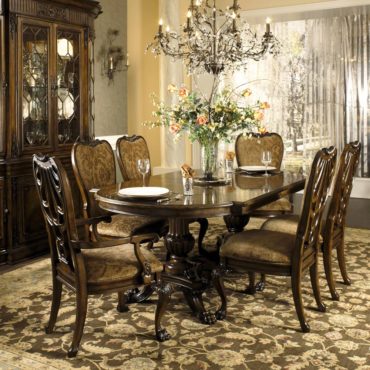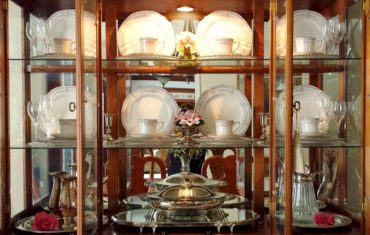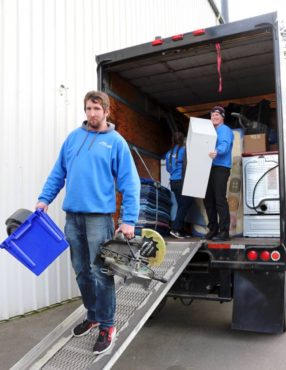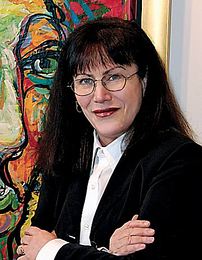 One does not need be a hoarder to have too much stuff. Or some say having stuff is never enough stuff. Or, “Don’t give me stuff, even if it’s free.” Got stuff?
One does not need be a hoarder to have too much stuff. Or some say having stuff is never enough stuff. Or, “Don’t give me stuff, even if it’s free.” Got stuff?
Stuff. A seemingly simple story has transformed into a complicated creature — as collecting, downsizing, inheriting, remodeling or just living.
Great grandmother’s fine china proudly sits, safely protected and displayed in a beautiful hutch where each of the 12 plates rest upright in notched footing, cups hang from gold j-hooks and dozens of matching dishes are stacked within.
This could be any story, any time or any place — a current situation of the necessity of accumulation vs. the accumulation of convenience.
Simple example would be a kitchen utensil drawer where one piles on new pieces with old, never giving a second thought of removing Aunt Jane’s wood- handle spatula. No big deal, those things are small, cheap, readily available and “who really cares.”
 Great-grandmother’s fine china is another story and even bigger than that is her cherished hutch. And then figure in the dining table and eight chairs — that’s a lot of “stuff.” Sorry, grandma, the kids don’t want it, and if they did, most don’t have room to accommodate. If they had room, it may not be their style.
Great-grandmother’s fine china is another story and even bigger than that is her cherished hutch. And then figure in the dining table and eight chairs — that’s a lot of “stuff.” Sorry, grandma, the kids don’t want it, and if they did, most don’t have room to accommodate. If they had room, it may not be their style.
There is a trend-meets-tradition factor that hasn’t been seen before. Seniors are downsizing and dying in record numbers, and being from an affluent era, they have lots of “stuff” to eliminate. A lot of that “stuff” is not wanted by the kids — for the younger generation are usually minimalists, still living at home — or does not fit in with modern interior trends.
 Us, older folks, have that “if it still works” philosophy, whereas the younger folks seem to discard and buy new as easily as breathing.
Us, older folks, have that “if it still works” philosophy, whereas the younger folks seem to discard and buy new as easily as breathing.
Sell the stuff? That is easier said than done, especially today when, with the exception of mid-century modern, old “stuff” is not as popular as it might have been in the past.
Lynn Reed, who deals in vintage and antiques, said, “True antiques are of little interest overall.” She is from Arizona, and I often converse on matters of area trends.
As we talk about different generations with their needs, conditions and situations, it makes it easier to understand accumulating or eliminating “stuff.” Those who experienced or immediately followed the Great Depression kept everything, or so it seems.
Debora Shafer, director of the Faith in Action Charitable Thrift Shop in Belfair, said that they have never seen such a different rash of activity.
“All summer, we were clearing out entire homes. The elderly parents have died, and the kids, generally ranging in age from 40 to 60, want to sell the house, and the house will not readily sell filled with stuff,” she said. “The older parents saved everything!”
Donating reputably in the community provides jobs, services and opportunities.
 Then there is storage, a partner word with “stuff.” Family-owned Hill Moving Services in Poulsbo has been in business for 30 years. Kay Hill brought to attention another factor when dealing with inherited houses with full content: Sometimes for emotional reasons, when a dear family member had died suddenly, the family may opt to have the house contents immediately picked up, put in vault containers and readied to contend with at a later time.
Then there is storage, a partner word with “stuff.” Family-owned Hill Moving Services in Poulsbo has been in business for 30 years. Kay Hill brought to attention another factor when dealing with inherited houses with full content: Sometimes for emotional reasons, when a dear family member had died suddenly, the family may opt to have the house contents immediately picked up, put in vault containers and readied to contend with at a later time.
Storage companies provide a source of sanity in the most practical way. With many people downsizing these days, some wish to keep the “stuff” they have no room for. While the storage vault concept usually does not accommodate anytime access, there are lots of public storage facilities in the area where users can come and go. Handy for downsizers still attached to their “stuff.”
I also talked to Joette Marchisella, who works for Merchant Moving and Storage and interstate Bekins Van Lines Inc. in Bremerton, said to be one of the oldest running companies in the Pacific Northwest. In 52 years, it has seen the same family ownership.
It sounds easy — they come to the house, give estimates, pack everything up and deliver to a location or store. They rent per vault by weight, 1,000 pounds minimum, and the charge can be as low as $25 monthly.
Marchisella shared another factor: Sometimes stored items are not retrieved for various reasons — maybe financial or convenience or maybe they’re forgotten. TV’s Storage Wars comes to mind, but that is a “stuff” story for another time.
 I have also heard of family “stuff” being stored in commercial units and monthly storage fees being paid year after year, with good intentions that the grandson may someday want the “stuff” — and so the” stuff” story continues with next generations.
I have also heard of family “stuff” being stored in commercial units and monthly storage fees being paid year after year, with good intentions that the grandson may someday want the “stuff” — and so the” stuff” story continues with next generations.
And back to the beginning. The industry of “stuff” starts with acquiring and thus formularization begins the never-ending story of life’s need for changing and adapting. Some of us may acquire too much stuff that we totally enjoy, and some younger generations may acquire stuff in different ways. But it won’t be like it was before.
Years from now, one may find great grandma’s fine china safely, tightly packed and tucked away in an attic somewhere, and someone may be delighted to find more treasures, “stuff” from the past.
I have been in the “stuff-business” for decades, especially having had a Pyrex Museum for 10 years and filming interviews pertaining to the subject. Not to mention the Amy Burnett Gallery, a story for another day, because I will not put art in the “stuff” category.
The subject of downsizing/inheriting art is “in our face” out there these days. One day in the gallery, I had three calls from folks wondering what to do with their vast art collection since they were downsizing, or what to do with all the art that they had inherited. Yes, I have answers, but that may be for the next article.





























